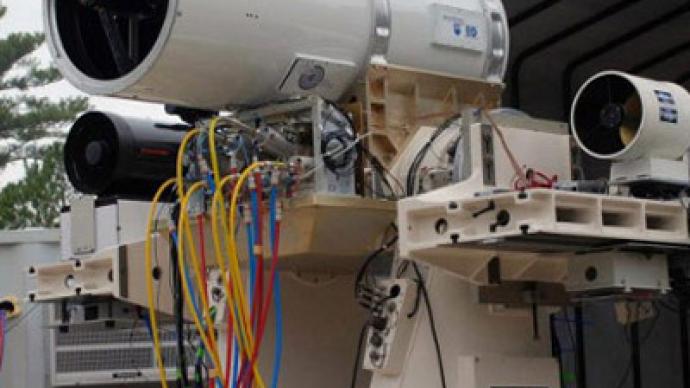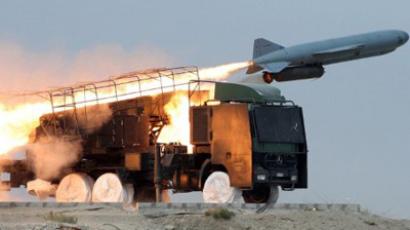Burning beam target: US Navy may deploy lasers in four years

The US Navy hopes to have operational laser cannons on their ships within the next four years. They will be used against fast-moving targets like cruise missiles, speedboats and drones.
The Navy hopes to have a working prototype for the futuristic laser weapon within two years, Wired reports.“The contract will probably have options go through four years, but depending on which laser source the vendors pick, we may be able to demo something after two years,” says Roger McGiness, who works on laser tech at the Office of Naval Research (ONR).Mike Deitchman, who oversees future weapons development for ONR, says in a month or two his directorate will hold an informal idea session with industry representatives. A contract for building a prototype may be sealed by the end of the year.The development comes after the Navy decided laser weapons technology is mature enough for deployment. The tipping point was last April’s test of a 15-kilowatt beam solid state laser, which managed to set afire the target ship’s engine. The target was moving at a distance of almost 2 km from the laser-equipped destroyer.It’s not clear how ONR’s proceeding with a relatively low-power laser will affect research of a more powerful megawatt-scale weapon under the Free Electro Laser project. The Navy hopes to develop a more powerful scalable weapon using magnets rather than a crystal as the gain medium. It could be used against heavily-armored vessels as opposed to unarmored aircraft and boats.However, such a laser remains elusive after a decade of research. Engineers still have no idea how to scale down such a device to fit onto a vessel or how to produce enough power onboard to feed it.“It’s easier to shrink down a solid-state laser, and there’s a maturity here, vice the Free Electron Laser,” Deitchman explained. “The solid-state laser will still deal with many asymmetric threats, but not the most hardened, most challenging threats. It’s near-to-mid term. The Free Electron Laser is still long-term.”Futuristic laser weapons are not the only ones the US Navy hopes to deploy. In February, ONR announced it had started testing for the first industry prototype of an electromagnetic railgun launcher. The weapon uses powerful magnetic fields to accelerate a conductive projectile to speeds of thousands of meters per second – enough to throw it hundreds of kilometers.














